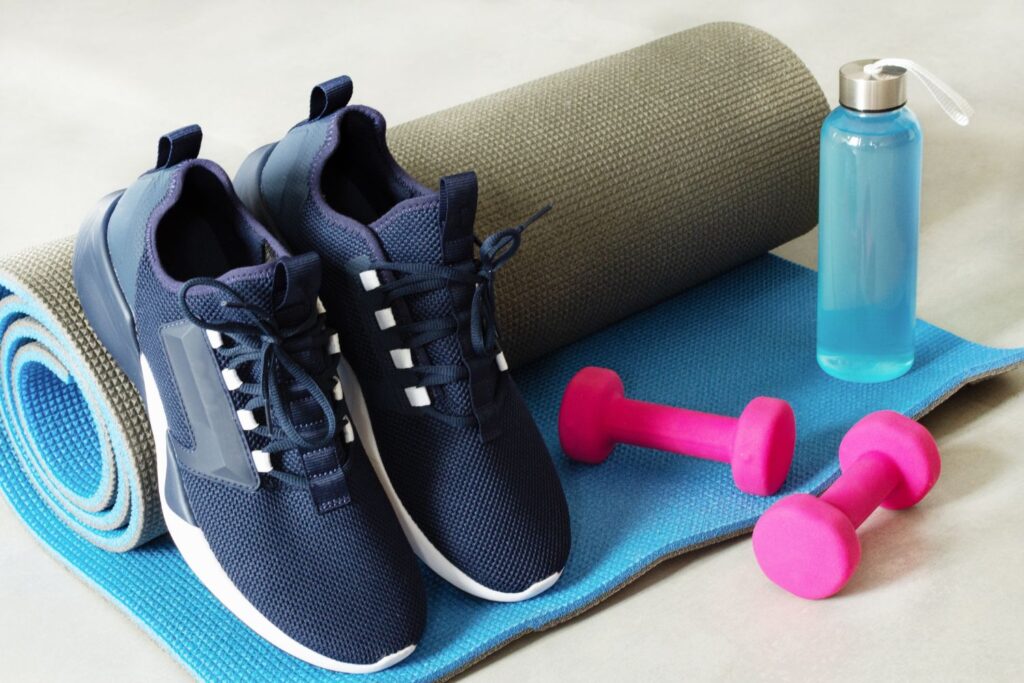The idea of running 13.1 miles can seem like too much right now. You might think your body will not be able to do it. It is normal to worry about being the last one to finish. Maybe you have not run more than a few miles in one time, and this distance sounds too big. But every weekend, thousands of women just like you finish half marathons.
A half marathon is a good goal for your first big run. It is hard enough to make you feel proud, but you can do it if you follow the right plan. You do not have to be good at sports or run for many years. You just need a good plan and the will to keep going.
Today, we have 12 important tips that will help you go from a beginner runner to someone who can finish a half marathon. These ideas include steps like how to build your running base and what to do on race day. You can try these tips in your training. It does not matter what your fitness level is now. You will get better as you use them.
The best part about half marathon training is how it can change your life. You will get stronger and have more trust in yourself. You will bounce back easier from tough days too. It shows you that you can do much more than you think. Let’s help you get set to finish with a huge smile on your face.
1. Start with a Walk-Run Method
The walk-run method helps you build up what you need for longer runs. It does not put too much stress on your body. This way, you can stop yourself from getting hurt and find it easier to go far. A lot of runners with experience still follow this way during races and when they train.
Begin with short times of running and take walking breaks. Try to run for 2 minutes and then walk for 1 minute. Do this for a total of 20 to 30 minutes. As you get better, slowly make your running time longer and your walking time shorter.
Don’t feel bad if you need to stop and walk while you train or during the race. You might be surprised at how far you can go and how good you feel after. This way helps your body get used to running for longer. It also helps you believe in yourself as you keep moving forward.
2. Follow the 10% Rule for Mileage
The 10% rule is a great way to help you avoid getting hurt when you train. The rule says you should go up by only 10% in the distance you run each week. It may feel slow, but it lets your body, like your muscles, bones, and joints, get used to doing more work.
If you ran 10 miles this week, try to go for 11 miles next week. Write down your miles in a notebook or use a running app. This slow increase will help you stay healthy and reach your goal step by step.
Your body needs time to get strong and ready for longer distances. If you hurry, you can end up tired, hurt, and upset. Trust this path and be proud of every week you keep training. You are making a base that will help you reach the finish line.
3. Invest in Proper Running Shoes

Your feet take many steps in a half marathon. It can be up to 24,000 steps. You need the right shoes for this. If your shoes do not fit well, you might get blisters. You could end up with black toenails too. There is also the risk of getting hurt, which can stop you from training. The most important thing you should get is a good pair of running shoes.
Go to a running store that knows a lot about shoes. There, someone can look at the way you walk and help pick shoes that fit well for your feet. Try not to pick shoes just because of how they look or because you know the brand. The best shoes for you could be different from what you think. You should always choose comfort over looks.
Swap out your running shoes after you use them for 300 to 500 miles or when you see the bottoms start to get thin. Try to keep up with how far your shoes go, like how you keep up with your training runs. Your feet and legs will feel better, and you will give them the support they need every time you go out for a run.
4. Build Your Base Before Adding Speed
When you are new, your top goal should be to build up your aerobic base, not to run fast. Base building is about running at an easy and comfortable speed most of the time. You need to go slow enough that you can talk to a friend or sing your favorite songs while you run. This way, you get the most out of your run and enjoy it too.
Spend most of your training time, at least 80%, running at an easy speed. At first, it may seem like you are moving too slow. But this is what boosts your aerobic system and lets you run farther. Hold on to faster runs for just one day each week after you build your base.
This easy running speed helps you get through the half marathon. You train your body to use fat while you run. You also build the strength you need for race day. Speed will come on its own as you get fitter, but you have to work to build up your strength for the race.
5. Schedule Rest Days Like Training Days
Rest days are the time when your body gets stronger after you train. Your muscles fix themselves and get used to the hard work you do. If you skip rest days, you can feel tired, hurt yourself, and not do as good in your workouts. You will not get better if you do not rest.
Plan to have two full rest days each week when you train. Do not run at all on these days. It is good to do light things like walking, stretching, or yoga instead. Give your running muscles a chance to recover. Know that you do not lose any fitness on these rest days.
Listen to your body. Take extra rest days if you need them. If you feel very tired, can’t sleep well, or get small aches often, it could mean you need more time to recover. It’s better to get to the start line with a bit less training than to be hurt or too worn out.
6. Practice Your Race Day Fuel and Hydration
What you eat and drink during your half marathon will make a big difference in how you feel when you run. Your body needs food and water for runs that are longer than ninety minutes. The things you eat may not always work well with your body. It is good to try your race day food and drinks on your long training runs. This way, you can see what works for you.
Try a few sports drinks, energy gels, or foods like dates or bananas when you do longer runs. See how your stomach feels and what foods give you energy that lasts. Something that helps your friend might not help you the same way.
Begin to drink water the day before you do your long runs or before race day. Do not wait to drink water until you are running. Take water with you or make sure your route has water fountains. If you have enough water and food, you will feel strong the whole time you run.
7. Include One Long Run Per Week
The long run is a big part of half marathon training. This run helps you build up the energy you will need on race day. It also helps you feel sure you can go the whole way. Try to do your long run on the same day every week. Make it your main workout.
Begin with a long run that feels good for where you are right now. This can be as short as 3 or 4 miles. Add one more mile to your long run after every two or three weeks. You do not need to go the whole 13.1 miles while training. If you get to 10 or 11 miles, you will be ready for race day.
Run your long runs at a slower speed than the pace you want to have in the race. The goal here is to build up your strength to keep going, not to run fast. By the end, these runs should feel hard, but you should not be tired out completely. You need to finish and still feel like you could run one or two more miles.
8. Strengthen Your Body Beyond Running
Running can be hard on your muscles and joints because of the same movement over and over again. The best way to help your body is to add strength training to your routine. This makes you less likely to get hurt and helps you run better. The top areas to work on are your core, glutes, and the muscles that help you keep a good running form. You do not need to go to a gym or buy special equipment.
Try bodyweight exercises like squats, lunges, planks, and glute bridges two times each week. These moves help you keep good posture and form, even if you feel tired when you run far. Strong muscles help you run better and with less work.
Include exercises that focus on your ankles and calves. These get a lot of use when you run. Calf raises, balancing on one leg, and working your feet can help keep you away from common injuries. If you do strength work for 15 to 20 minutes two times a week, you will see that it helps a lot.
9. Learn to Listen to Your Body
Your body will let you know how your training is going, and you have to learn what these signals mean. If you want good training, knowing your body’s signals is important. When you start to work out, feeling a bit sore is normal. If you have sharp pain or you feel sore for a long time, you should pay attention to it. You get better at telling the difference between pain that is fine and pain that is not as you do this more.
Normal training feelings can be things like some muscle tiredness, feeling worn out after tough workouts, and that good burn you get when you push yourself the right way. You need to watch out for problems like sharp or shooting pain, swelling, pain that gets worse when you run, or pain that does not go away even when you rest.
If you are not sure, take another rest day or talk to a doctor. It is better to skip a few training days than to be hurt and not run in your race. Your body can get used to a lot, but it needs time and you have to take care of it during distance training.
10. Create a Realistic Training Schedule
Sticking with your half marathon training is more important than being perfect. You have to look at what is really going on in your life. Think about work, family, and your other plans. Make a training routine that works with what you have to do each week. It is good to follow your plan most of the time, even if you miss some days. A plan you do for about 80% of the time helps you more than a perfect plan you only follow half the time.
Most new runners do good with three to four runs in a week. There should be one long run, one run that is a bit harder, and one or two easy runs. Plan your runs at times that you will really be able to do them. If you are not someone who wakes up early, do not plan to run at five in the morning every day.
Make your schedule flexible by using “floating” run days that you can change as needed. Life can get in the way of your training plan. That is normal and happens to everyone. What matters most is getting back to your plan as fast as you can. Do not let missing one run mess up your whole week.
11. Visualize Your Race Day Success
Mental training matters as much as your runs when you want to do well in a half marathon. Take time to see yourself finishing the race strong and happy. Think about how you will get through tough times in the race with calm and drive.
During your training runs, try to use good self-talk. Switch thoughts like “I can’t do this” to “I’m getting stronger with every step.” The mind takes in what you keep telling it. Say good things to yourself about how well you run.
Make a playlist with songs that help you feel strong and ready to go. Music is great for staying on track when training gets hard or when you are racing. Pick tracks that help you remember why you started and what it means for you to finish.
12. Plan Your Taper and Race Day Strategy
The taper period is the last two or three weeks before the race. This is when you cut down on how much you train. The goal is to get to the race feeling fresh. You do not stop training at this time. You just run less, but still keep some hard workouts so your legs stay strong. A lot of runners worry during taper. Be sure that all the fitness you got from your training will stay with you.
Plan your race day steps early. Have in mind where you will park, what you will wear, and what you will eat that morning. Pick up your race bib and shirt the day before, if you can. When you take care of these things ahead, you feel calm on race day.
Plan how you want to run the race. Set your goal speed, choose when to take walking breaks, and know the spots to see your support team. But the race may not go as planned, so be ready to change things if you need to. Try to enjoy the day and celebrate what you have done.
Conclusion
Your half marathon training is a big step that will push you to be your best. You will find new strength in you that you did not know was there. You will show yourself that it is possible to reach big goals. Training will help you run better, and it will give you the belief to do well in other parts of your life.
Start with these 12 tips. You can change them to fit your life and what you want to do. Keep in mind that every runner started as a beginner. The women who will encourage you at your first race also began just like you. You are part of this group of strong women who never let how far they have to go scare them.
The biggest tip is to begin today. You don’t have to wait until you get in better shape or find more time. Go out and walk in your neighborhood. Make this your first training day. Every big goal starts with one step.
Your half marathon finish line is waiting for you. It can be just 12 weeks away or maybe 20 weeks away. You can get there. Be sure to follow the plan. Keep at it each day, and you might surprise yourself by how much you get done. The runner you want to be is there and it’s only one training plan away.
Pin This for Future Reference





